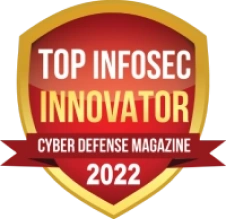How Zero Trust Works: Key Principles
Zero Trust cybersecurity operates on the principle that no entity, whether inside or outside the network, should be inherently trusted. Instead, every access request must be verified continuously based on identity, device security posture, and context. This approach eliminates implicit trust and significantly reduces the attack surface, ensuring that organizations are protected against both external and insider threats.
One of the core principles of Zero Trust is Verify Every Access Request. Traditional security models assume that once a user gains access to the network, they can move freely. Zero Trust challenges this by requiring continuous authentication and authorization. Every access attempt is validated based on multiple factors, including user identity, device security, location, and behavior.
Another fundamental aspect is Least Privilege Access Control. Users and applications are granted only the minimum level of access required to perform their tasks. This reduces the risk of unauthorized access and lateral movement within the network. If an attacker compromises a user account, their ability to move across systems is limited, preventing widespread damage.
Microsegmentation further strengthens Zero Trust by breaking the network into smaller, isolated segments. Instead of allowing broad access to an entire network, microsegmentation enforces strict policies that limit access between different segments. For example, a finance department’s systems may be completely isolated from an HR system, preventing unauthorized access even from within the organization.
Continuous Monitoring and Threat Detection is another key principle. Zero Trust does not assume that a system is secure once access is granted. Instead, it continuously monitors activity, looking for suspicious behavior or anomalies. AI-driven threat detection solutions analyze real-time data to identify potential security breaches before they escalate.
Identity and Access Management (IAM) plays a crucial role in Zero Trust. Organizations must implement multi-factor authentication (MFA), biometric verification, and other advanced authentication methods to ensure that only authorized users can access sensitive data. Strong identity management policies prevent attackers from exploiting weak or stolen credentials.
Ultimately, Zero Trust cybersecurity is about shifting from a reactive security approach to a proactive, continuous verification model. By implementing these key principles, organizations can reduce the risk of data breaches, insider threats, and cyberattacks. In an era where threats are constantly evolving, Zero Trust provides a resilient security framework that ensures only verified and authorized entities can access critical resources, helping organizations stay ahead of potential threats.
Why Traditional Security Models Fail
Traditional security models were built on the assumption that everything inside the network perimeter is trusted, while external threats come from outside. This outdated approach, often referred to as "castle-and-moat" security, is no longer effective in today’s digital landscape. As organizations adopt cloud computing, remote work, and interconnected systems, the perimeter has all but disappeared. Attackers can exploit weak points, compromise user credentials, and move laterally within a network, bypassing traditional defenses with ease.
One of the biggest flaws of traditional security models is their reliance on perimeter-based defenses. Firewalls, VPNs, and network access controls assume that once a user or device gains access, it is inherently trustworthy. However, attackers can exploit vulnerabilities to breach the perimeter and move laterally, gaining access to sensitive systems undetected. The rise of insider threats and credential-based attacks further exposes this weakness.
Another failure of traditional security is implicit trust. Legacy models operate on the assumption that users, once authenticated, should be able to move freely within the network. This is a critical flaw because it allows attackers who compromise a single user account to gain access to multiple systems without additional verification. This type of attack, known as lateral movement, is a common tactic in ransomware and advanced persistent threats (APTs).
Lack of continuous monitoring is another issue. Traditional models rely heavily on one-time authentication at login, but they do not continuously evaluate user behavior or device security posture. This means that once an attacker gains access, they can operate freely without triggering security alerts. In contrast, modern threats require continuous verification and behavior analysis to detect anomalies in real time.
Additionally, traditional security struggles with modern IT environments. The adoption of cloud applications, SaaS platforms, and hybrid workforces means that employees, contractors, and third-party vendors frequently access systems from multiple locations and devices. Legacy security tools are often ill-equipped to enforce consistent security policies across these diverse environments.
With cyber threats becoming more sophisticated, organizations can no longer afford to rely on security models that assume trust. Zero Trust security overcomes these limitations by enforcing strict identity verification, least privilege access, continuous monitoring, and microsegmentation. By eliminating implicit trust and verifying every access request, Zero Trust provides a modern security framework that adapts to the complexities of today’s digital landscape, preventing breaches before they happen.
Zero Trust vs Detection-Based Security
Detection-based security relies on identifying known threats and responding to them after they are detected. This approach, used by traditional antivirus and endpoint detection and response (EDR) solutions, assumes that security teams can recognize malicious activity based on patterns, signatures, or behavioral analysis. However, modern cyber threats have evolved to bypass detection-based systems, making this approach increasingly ineffective. Zero Trust, on the other hand, eliminates the assumption that anything is safe, focusing instead on preventing threats from executing in the first place.
One of the key weaknesses of detection-based security is its reliance on known threat signatures. Traditional security tools analyze malware signatures and known attack patterns to identify threats. However, attackers are constantly developing new malware variants, zero-day exploits, and advanced persistent threats (APTs) that evade detection. If a threat has not been previously identified, a detection-based system may fail to recognize and block it, leaving organizations vulnerable.
Another limitation is reactive threat response. Detection-based security operates under the assumption that an attack will inevitably occur, focusing on detecting, containing, and mitigating the damage after the fact. This approach increases the risk of data breaches, ransomware infections, and operational downtime. Security teams must constantly monitor alerts, investigate incidents, and remediate threats, often after they have already infiltrated the network.
Zero Trust takes a different approach by eliminating implicit trust and enforcing continuous verification. Instead of waiting for a security system to detect a breach, Zero Trust assumes that every access request could be a potential threat and verifies identity, device security posture, and behavior before granting access. By requiring strict authentication and authorization, Zero Trust prevents unauthorized users and malware from executing in the first place.
Another key distinction is Zero Trust’s use of containment and microsegmentation. Detection-based security allows threats to spread within a network before an alert is triggered. Zero Trust enforces least privilege access, ensuring that users and applications only have access to what they need. If an attacker does gain access, they are confined to a limited environment, preventing lateral movement and minimizing potential damage.
Finally, Zero Trust operates under a proactive security model, continuously monitoring and assessing risk. Unlike detection-based security, which reacts to threats once they are detected, Zero Trust assumes that threats already exist within the network and takes preventive measures to neutralize them. This shift from a detection-and-response approach to a prevention-first strategy significantly reduces the risk of successful cyberattacks.
As cyber threats become more sophisticated, organizations must move beyond detection-based security and adopt a proactive, Zero Trust framework. By removing implicit trust, verifying every access request, and restricting lateral movement, Zero Trust provides a modern security architecture that effectively protects against both known and unknown threats.






